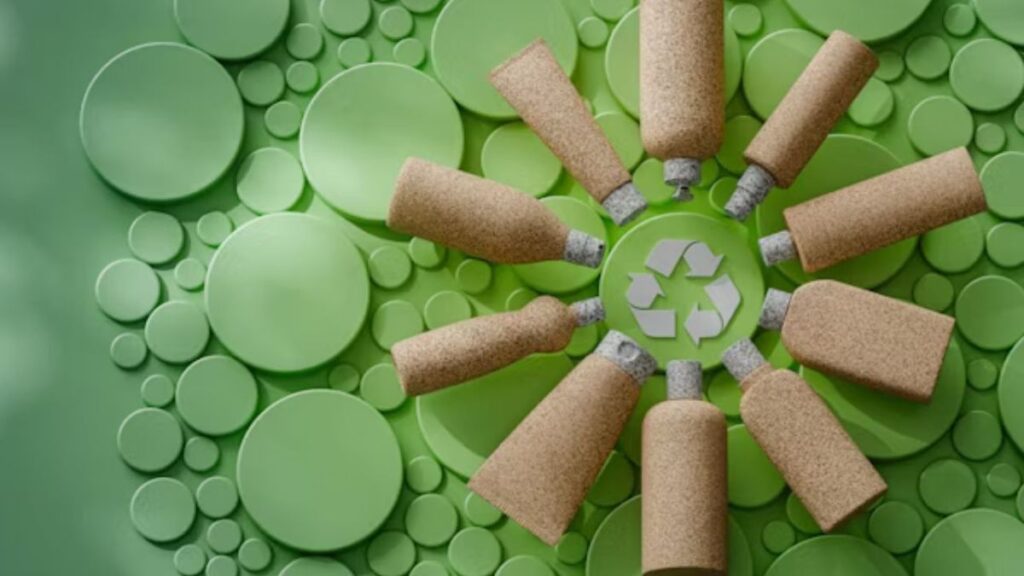Introduction to the environmental impact of packaging
Every year, billions of tons of packaging materials contribute to the growing environmental crisis. From landfills overflowing with plastic to oceans choked with waste, the impact is undeniable. Consumers are becoming more aware and demanding sustainable alternatives that prioritize our planet’s health.
Enter Pappedeckel—a groundbreaking innovation in sustainable packaging that promises not only to reduce waste but also revolutionize how we think about our consumption habits. As companies scramble to meet eco-friendly demands, Pappedeckel stands out as a game-changer reshaping the future of packaging. Let’s dive into what makes this material so unique and why it could be key in turning the tide toward sustainability.
What is Pappedeckel and how is it different from traditional packaging materials?
Pappedeckel is an innovative packaging solution designed with sustainability in mind. Unlike traditional materials such as plastic or Styrofoam, Pappedeckel primarily consists of paperboard. This choice makes it biodegradable and recyclable, reducing its environmental footprint considerably.
What sets Pappedeckel apart is its unique design that combines functionality with minimalism. It can be customized for various products while providing adequate protection during shipping and handling.
Moreover, Pappedeckel’s lightweight nature contributes to lower transportation costs and reduced carbon emissions compared to heavier alternatives. Its production process also emphasizes fewer resources, making it a more eco-friendly option overall.
This revolutionary material bridges the gap between durability and environmental responsibility, offering businesses a way to showcase their commitment to sustainable practices without compromising quality or aesthetics.
Benefits of using Pappedeckel in packaging
Pappedeckel offers a range of benefits that make it an attractive option for sustainable packaging. First and foremost, its eco-friendly composition significantly reduces waste in landfills. Made primarily from renewable materials, Pappedeckel promotes responsible sourcing.
Additionally, this innovative packaging solution is lightweight yet sturdy. This means lower shipping costs and reduced carbon footprint during transportation. Brands can protect their products while also being mindful of environmental impact.
Another advantage lies in its versatility. Pappedeckel can be customized to meet various needs—from food containers to retail displays—ensuring brands can maintain their unique identity without compromising sustainability.
Moreover, consumers are increasingly drawn to environmentally conscious choices. By adopting Pappedeckel, companies not only contribute positively to the planet but also align with customer values, fostering brand loyalty and trust as they champion sustainability initiatives together.
Success stories of companies using Pappedeckel
Several companies are leading the way in sustainable packaging by embracing Pappedeckel. One notable example is a well-known food brand that switched from plastic containers to Pappedeckel for its snack products. The change not only reduced their carbon footprint but also resonated with environmentally conscious consumers.
Another success story comes from an innovative beverage company that opted for Pappedeckel caps and labels. They reported increased sales as customers appreciated the eco-friendly approach and were eager to support brands committed to sustainability.
A small local bakery has also adopted this packaging solution, showcasing its commitment to reducing waste. Their use of Pappedeckel has attracted new clientele who prioritize green practices when choosing where to shop.
These examples highlight how various businesses have successfully integrated Pappedeckel into their operations, demonstrating both environmental responsibility and enhanced customer loyalty.
How Pappedeckel is promoting a circular economy
Pappedeckel is redefining the concept of sustainability by embracing a circular economy model. This innovative packaging solution is made primarily from renewable resources, which significantly reduces reliance on fossil fuels.
Once products are used, Pappedeckel can be recycled easily. This process not only minimizes waste but also allows materials to re-enter the production cycle. As a result, fewer new raw materials need to be sourced.
Additionally, manufacturers using Pappedeckel can support local economies through responsible sourcing and eco-friendly practices. By creating demand for sustainable materials, companies encourage innovation in recycling technologies and processes.
The integration of Pappedeckel into various industries fosters collaborations between businesses focusing on sustainability. Together they promote closed-loop systems that benefit both the environment and society at large.
Challenges and limitations of using Pappedeckel
Despite its many advantages, Pappedeckel faces challenges that can hinder widespread adoption. One major issue is the initial cost of production. Transitioning from traditional packaging materials may require significant investment in new machinery and processes.
Additionally, while Pappedeckel is designed for sustainability, its performance can vary depending on the product being packaged. For example, moisture-sensitive items might not fare well without added coatings or treatments.
There’s also a learning curve involved for companies transitioning to this innovative material. Understanding how to optimize design and functionality with Pappedeckel takes time and experimentation.
Consumer awareness around sustainable options plays a crucial role. Without sufficient education about the benefits of using Pappedeckel over conventional materials, market demand could remain stagnant despite its potential environmental impact.
The future of sustainable packaging with Pappedeckel
The future of sustainable packaging is bright, with Pappedeckel leading the charge. This innovative material offers a fresh approach to addressing environmental concerns linked to traditional packaging.
Pappedeckel stands out due to its eco-friendly properties. Made from renewable resources, it significantly reduces reliance on plastics and other harmful materials.
As more consumers prioritize sustainability, brands embracing Pappedeckel will resonate deeply in the market. Its versatility allows for creative designs while maintaining functionality.
Furthermore, advancements in technology continue to enhance its production processes. This means greater efficiency and lower carbon footprints for businesses utilizing Pappedeckel.
With an increasing number of industries recognizing the importance of sustainable practices, we can expect widespread adoption of this remarkable material soon. The momentum is building towards a greener world where Pappedeckel plays a central role in shaping how products are packaged and delivered.
Conclusion
The shift towards sustainable practices is no longer a trend; it’s an urgent necessity. Pappedeckel stands at the forefront of this movement, offering innovative packaging solutions that align with a more eco-friendly future. Its unique properties not only replace traditional materials but also enhance the sustainability of various industries.
As businesses increasingly recognize their environmental impact, adopting Pappedeckel can be a game-changer. This material promotes responsible consumption and production while supporting a circular economy through recyclability and reduced waste.
While challenges remain in terms of scalability and consumer awareness, the potential benefits far outweigh these obstacles. By embracing Pappedeckel, companies are not just meeting regulatory requirements; they are taking proactive steps toward a greener planet.
With brands leading by example and consumers becoming more conscious about their choices, it’s clear that Pappedeckel has carved out its place in the future landscape of sustainable packaging. The journey may have its hurdles, but the possibilities for innovation and positive change are limitless.







